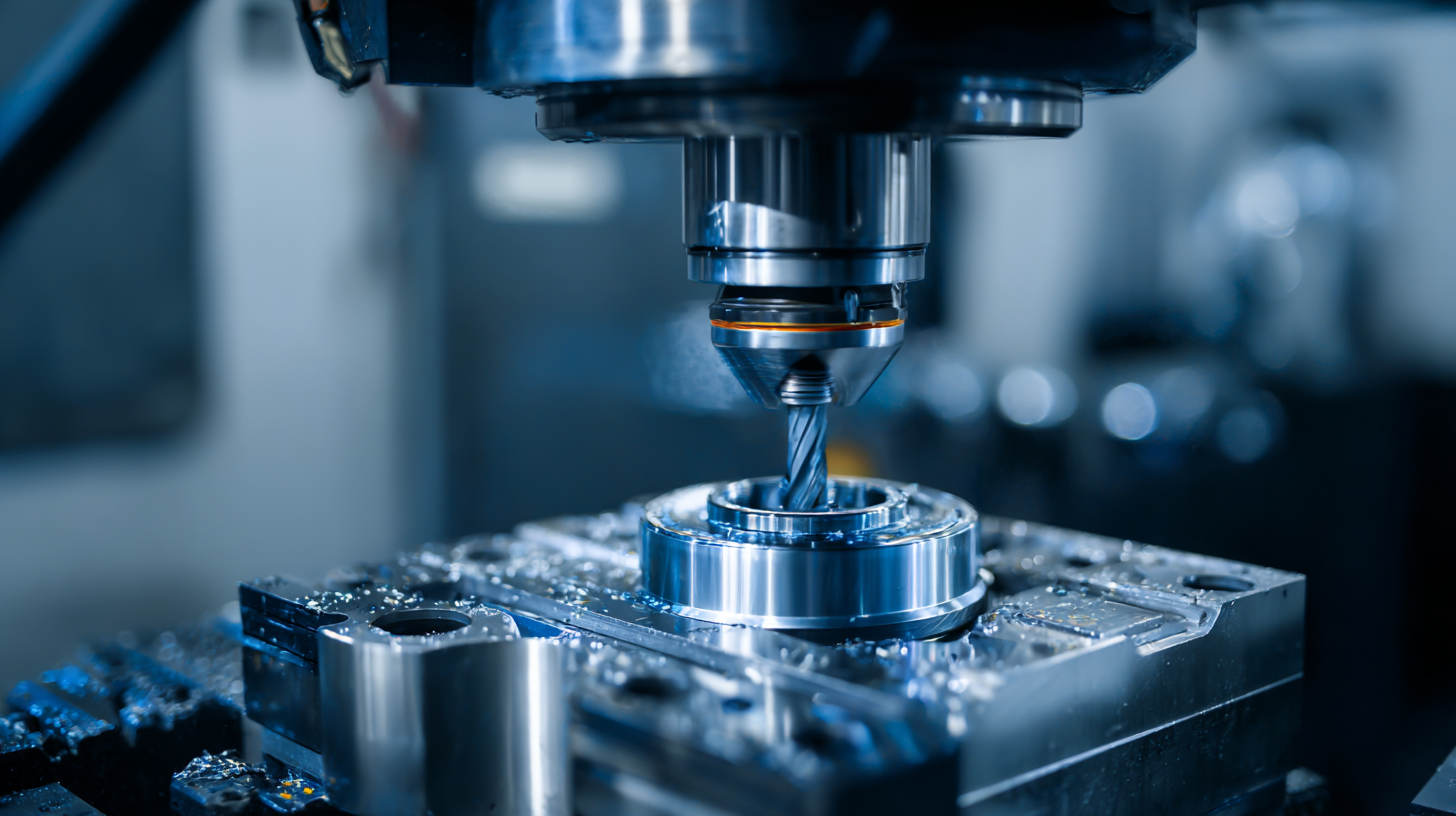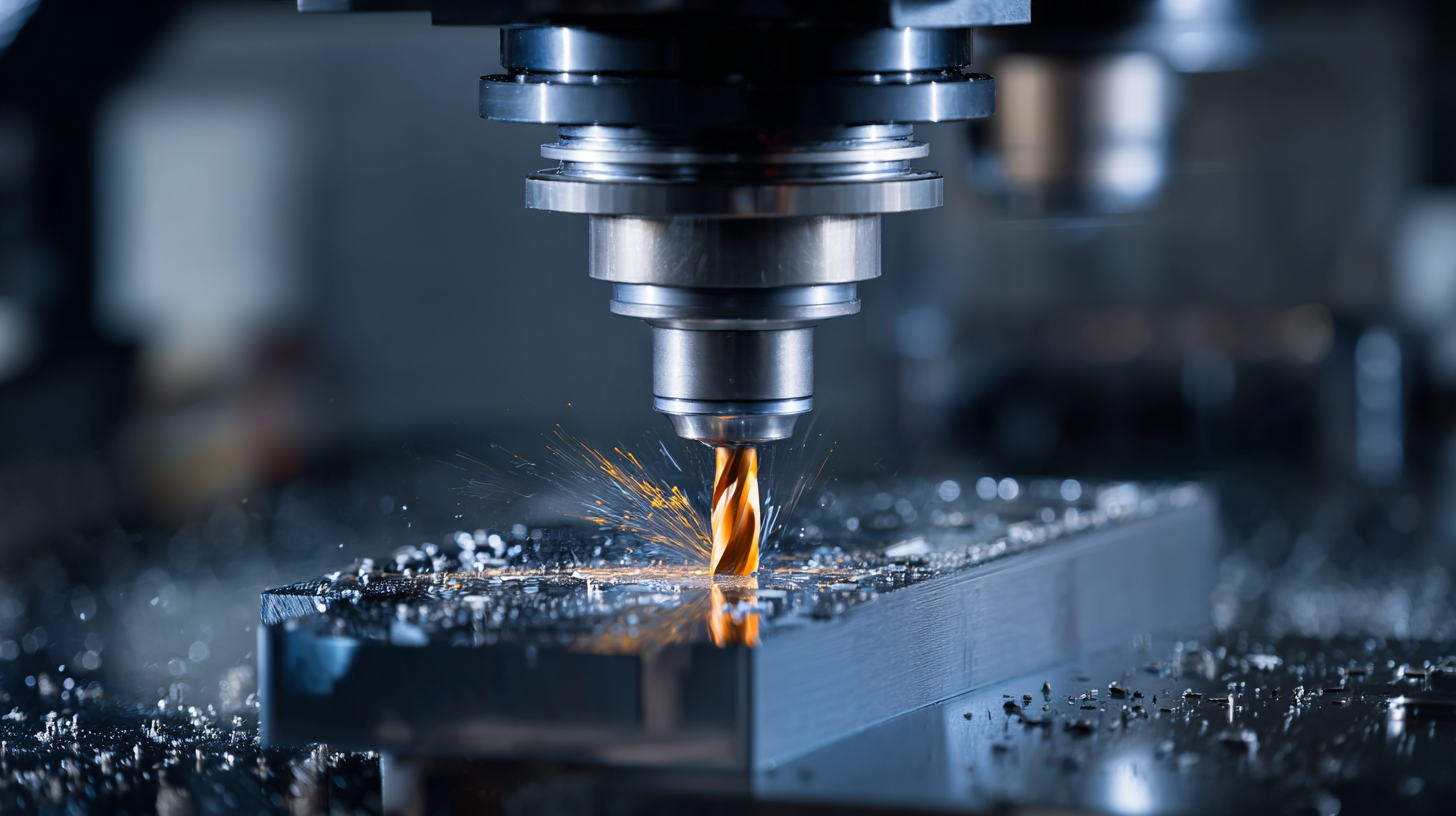The Ultimate Guide to Choosing the Best CNC Mill for Your Business Needs
In the rapidly evolving world of manufacturing, choosing the right CNC mill is crucial for optimizing production efficiency and enhancing product quality. According to a report by Market Research Future, the global CNC milling machine market is projected to reach USD 25 billion by 2025, reflecting a compound annual growth rate (CAGR) of 6.2% from 2019. This growth highlights the increasing reliance on precision machining across various industries, including automotive, aerospace, and electronics. As businesses strive to remain competitive, the right CNC mill can significantly reduce operational costs and increase productivity. This ultimate guide aims to assist you in navigating the complexities of CNC mill selection, ensuring that your investment aligns perfectly with your specific business needs and demands.

Understanding the Key Features of CNC Mills for Modern Manufacturing
When selecting a CNC mill for your business, understanding the key features is crucial for modern manufacturing efficiency. One of the primary attributes to consider is the machine’s rigidity and stability. A robust structure minimizes vibration, leading to higher precision and improved surface finishes on machined parts. Additionally, look for CNC mills with powerful spindles and high RPM capabilities, as these will enhance your ability to tackle a variety of materials, from soft plastics to hard metals.
Another important feature is the control system. Modern CNC mills come equipped with advanced software that allows for ease of programming and operation. Look for user-friendly interfaces that support G-code and offer simulation features, as these will streamline the manufacturing process and reduce the learning curve for operators. Other aspects like tool changers, axis movements, and automation capabilities also play a significant role in maximizing productivity. By carefully evaluating these key features, you can make an informed decision that aligns with your specific manufacturing requirements.
The Ultimate Guide to CNC Mills: Key Features Analysis
This bar chart illustrates the importance level (on a scale of 1 to 10) of various key features to consider when choosing a CNC mill for modern manufacturing needs. Precision is rated highest, followed by speed and durability, indicating what businesses value most in CNC milling machines.
Evaluating Different CNC Mill Models for Your Specific Business Demands
When evaluating different CNC mill models for specific business demands, it's essential to consider various factors such as precision, material compatibility, and production volume. According to a report by MarketsandMarkets, the global CNC machining market is projected to reach $100 billion by 2025, underscoring the growing significance of CNC mills in manufacturing. Businesses must align their operational needs with the capabilities of the CNC models available, ensuring they select the right machinery to meet industry standards and customer expectations.
One crucial aspect to assess is the machine's precision level. High-precision CNC mills are designed to operate with tolerances as tight as ±0.0001 inches, which is vital for industries such as aerospace and medical device manufacturing, where error margins are minimal. Additionally, the choice of materials—ranging from aluminum to titanium—should influence the selection process. A recent study indicated that 60% of manufacturers prioritize flexibility in material handling when choosing a CNC mill, enabling them to adapt to varied production demands effectively. Ultimately, a thorough understanding of these factors can significantly impact a business's productivity and profitability.
The Ultimate Guide to Choosing the Best CNC Mill for Your Business Needs
| CNC Mill Model | Max Spindle Speed (RPM) | Work Envelope (X x Y x Z mm) | Control System | Price Range ($) | Ideal Application |
|---|---|---|---|---|---|
| Entry-Level CNC Mill | 6000 | 600 x 400 x 500 | Basic Desktop Control | 5000 - 8000 | Hobbyist Projects |
| Standard CNC Mill | 8000 | 1000 x 600 x 600 | Fanuc Control System | 15000 - 25000 | Prototype Manufacturing |
| Industrial CNC Mill | 12000 | 1500 x 800 x 800 | Siemens Control System | 30000 - 50000 | Mass Production |
| High-Precision CNC Mill | 15000 | 1200 x 1200 x 800 | Heidenhain Control System | 60000+ | Aerospace Parts |
The Role of Technological Advancements in CNC Machining
 The rapid evolution of digital manufacturing technologies has played a crucial role in transforming CNC machining processes across various industries. With advancements such as automation, artificial intelligence, and IoT integration, businesses can now achieve unparalleled levels of efficiency and accuracy. These technologies enable CNC mills to operate with greater precision, reducing production time and minimizing material waste. As a result, companies that embrace these innovations are better equipped to meet fluctuating market demands and enhance their competitive edge.
The rapid evolution of digital manufacturing technologies has played a crucial role in transforming CNC machining processes across various industries. With advancements such as automation, artificial intelligence, and IoT integration, businesses can now achieve unparalleled levels of efficiency and accuracy. These technologies enable CNC mills to operate with greater precision, reducing production time and minimizing material waste. As a result, companies that embrace these innovations are better equipped to meet fluctuating market demands and enhance their competitive edge.
Moreover, the proliferation of smart manufacturing tools has revolutionized how businesses approach CNC milling. Real-time monitoring and data analytics allow manufacturers to gather insights into their operations, facilitating informed decision-making. This ensures that any inefficiencies can be quickly identified and addressed. By leveraging these cutting-edge technologies, companies can optimize their machining processes, ultimately leading to higher quality outputs and better overall performance. In a landscape where staying ahead is paramount, understanding and integrating these advancements is essential for any business looking to thrive in the CNC machining sector.
Cost-Benefit Analysis: Investing in a CNC Mill for Future Growth
When considering the investment in a CNC mill, a comprehensive cost-benefit analysis is essential for aligning machinery capabilities with business growth. According to the 2021 Industry Report by the National Association of Manufacturers, nearly 75% of companies that invested in CNC technology reported an increase in production efficiency by up to 40%. This substantial uptick in productivity is critical for businesses that aim to compete effectively in an ever-evolving market landscape.
Moreover, the initial capital outlay for CNC mills can seem daunting, often ranging from $30,000 to $150,000 depending on the specifications and capabilities. However, a study by Deloitte highlights that businesses typically recover their investment in CNC machinery within 18 to 24 months due to reduced labor costs and minimized waste. By automating processes, companies gain the agility needed to scale operations, respond to market demands swiftly, and ultimately enhance profitability. As such, assessing the long-term financial advantages alongside immediate costs can illuminate the immense potential of CNC mills for sustainable growth.
Selecting the Right CNC Milling Software to Complement Your Equipment
 When choosing a CNC mill for your business, selecting the right CNC milling software is just as crucial as the machine itself. The software acts as the interface between design and execution, dictating how efficiently and accurately your projects are completed. There are various options available, and it’s essential to find a software solution that aligns with your specific operational needs. Factors such as , compatibility with existing tools, and the ability to handle complex designs should all be taken into account.
When choosing a CNC mill for your business, selecting the right CNC milling software is just as crucial as the machine itself. The software acts as the interface between design and execution, dictating how efficiently and accurately your projects are completed. There are various options available, and it’s essential to find a software solution that aligns with your specific operational needs. Factors such as , compatibility with existing tools, and the ability to handle complex designs should all be taken into account.
In addition to functionality, consider the scalability of the software. As your business grows, your software should be able to accommodate more advanced features and larger projects without compromising performance. Look for software that supports updates and has a robust community or customer support system, ensuring you can get assistance and stay informed about new capabilities. Ultimately, investing the time to research and choose the right CNC milling software will not only enhance the performance of your CNC mill but also improve overall productivity and profitability in your business.